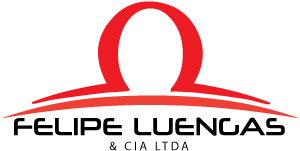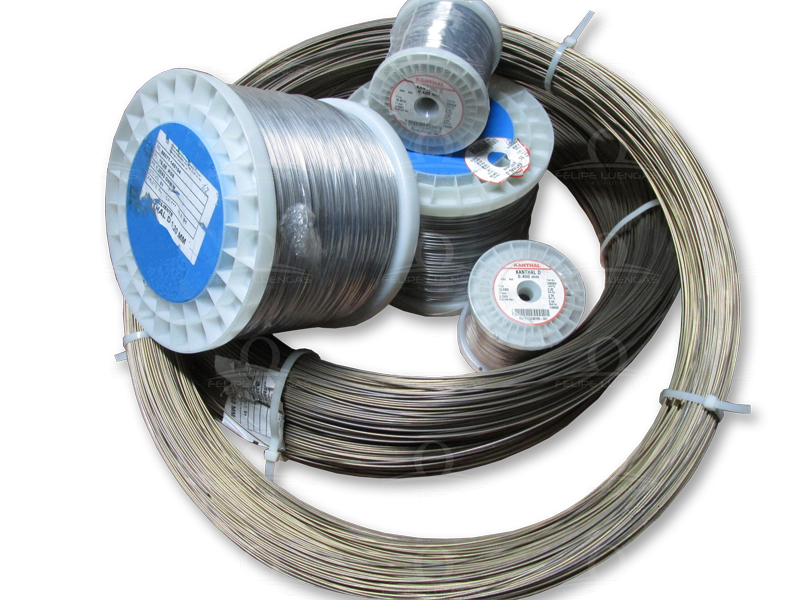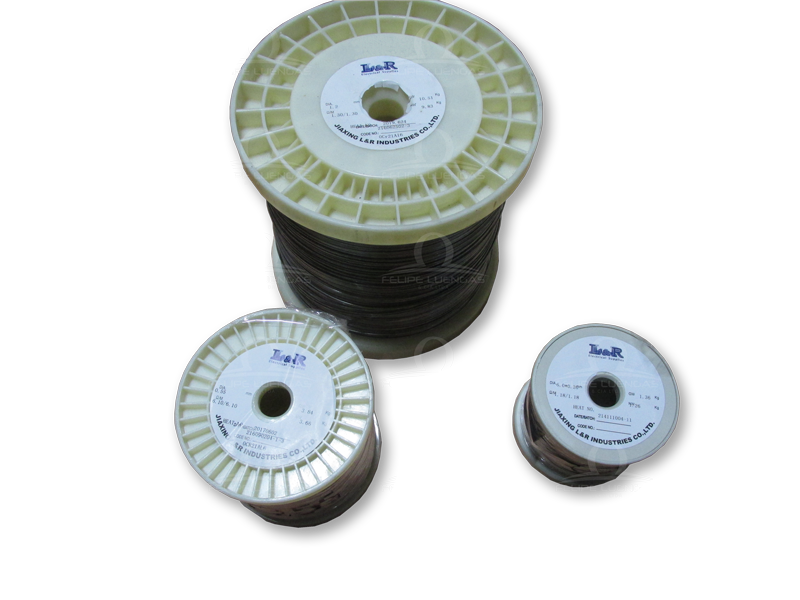Resistive Wires:
The resistivity and maximum operating temperature are the most important characteristics of a resistive wire. The higher the resistivity, the thicker the gauges with which a given resistance is obtained and therefore its useful life is longer. Likewise, the higher the maximum operating temperature, the higher the surface load (W/cm²) will be supported. Notwithstanding the temperature required in each particular application and the area available to accommodate the resistance will determine the wire to be used.
- Kanthal:
Swedish brand founded in 1931. Its founder invented resistive wires based on the FeCrAl alloy that is the basis of most resistive wires used today.
Origin: Sweden
Reference: D
Properties:
| Density [g/cm³] | 7.25 |
| Resistivity at 20°C [Ω mm²/m] | 1.35 |
| Melting Point [°C] | 1500 |
| Maximum Continuous Operating Temperature in air [°C] | 1300 |
Composition:
| C (%) Max | 0.08 |
| Si (%) Max | 0.7 |
| Mn (%) Max | 0.5 |
| Cr (%) Min-Max | 20.5-23.5 |
| Al (%) Nominal | 4.8 |
| Fe (%) | Balance |
Cross Section: Circular, 0.10mm to 5.00mm.
- L&R:
This supplier supplies us with resistive wires continuously since the beginning of the century.
Origin: China
References: OCr21Al4, OCr21Al6, OCr21Al7Mo2
Properties:
| Reference | OCr21Al4 | OCr21Al6 | OCr21Al7Mo2 |
| Density [g/cm³] | 7.35 | 7.16 | 7.1 |
| Resistivity at 20°C [Ω mm²/m] | 1.23 | 1.42 | 1.53 |
| Melting Point [°C] | 1500 | 1500 | 1520 |
| Maximum Continuous Operating Temperature in air [°C] | 1100 | 1250 | 1400 |
Composition:
| Reference | OCr21Al4 | OCr21Al6 | OCr21Al7Mo2 |
| Cr (%) Min-Max | 18-21 | 19-22 | 21-23 |
| Al (%) Min-Max | 3-4.2 | 5-7 | 5-7 |
| Mo (%) | - | - | 1.8-2.2 |
| Fe (%) | Balance | Balance | Balance |
Cross Section:
OCr21Al4: Rectangular, 0.9X0.06mm a 7.0x0.20mm.
OCr21Al6 y OCr21Al7Mo2: Circular, 0.10mm a 5.00mm.


